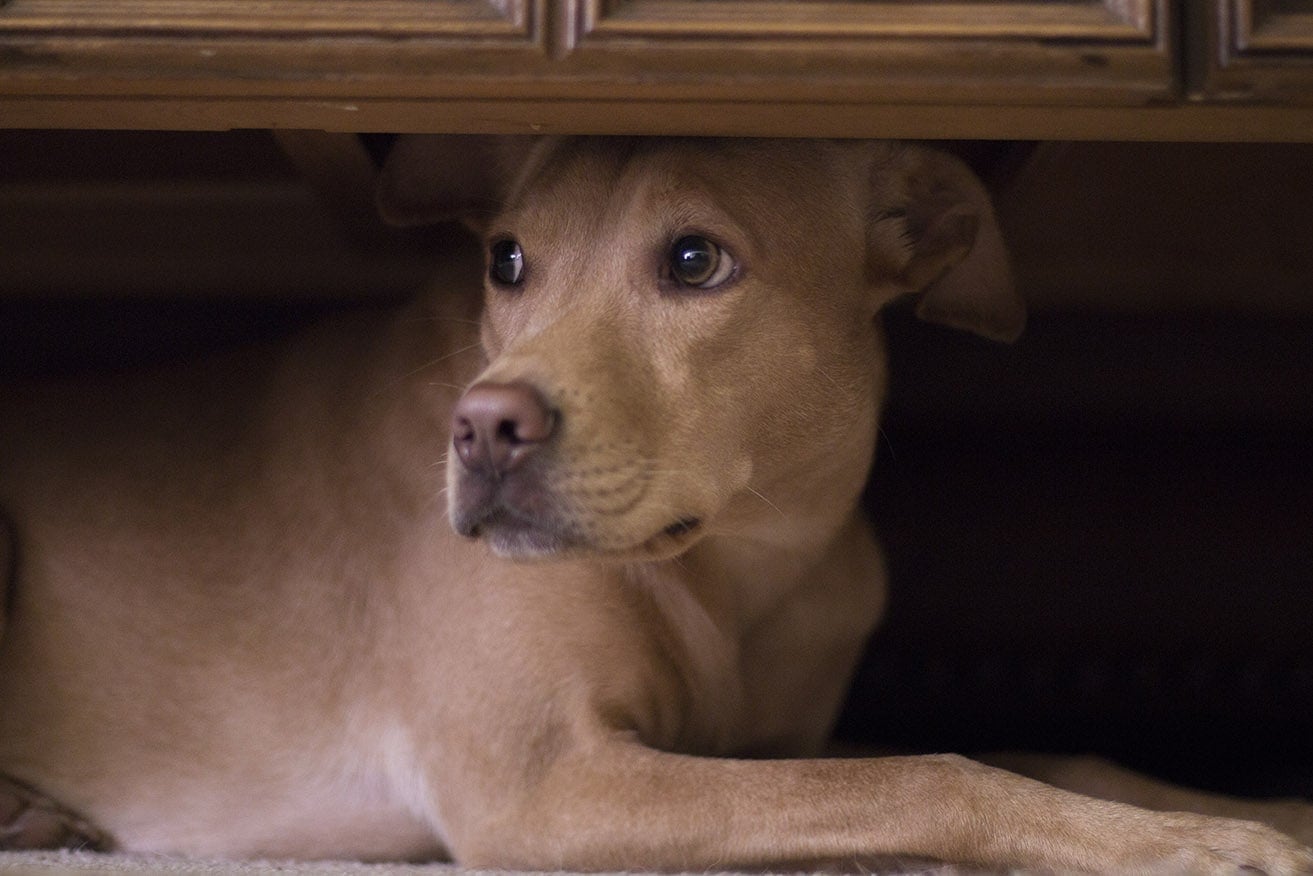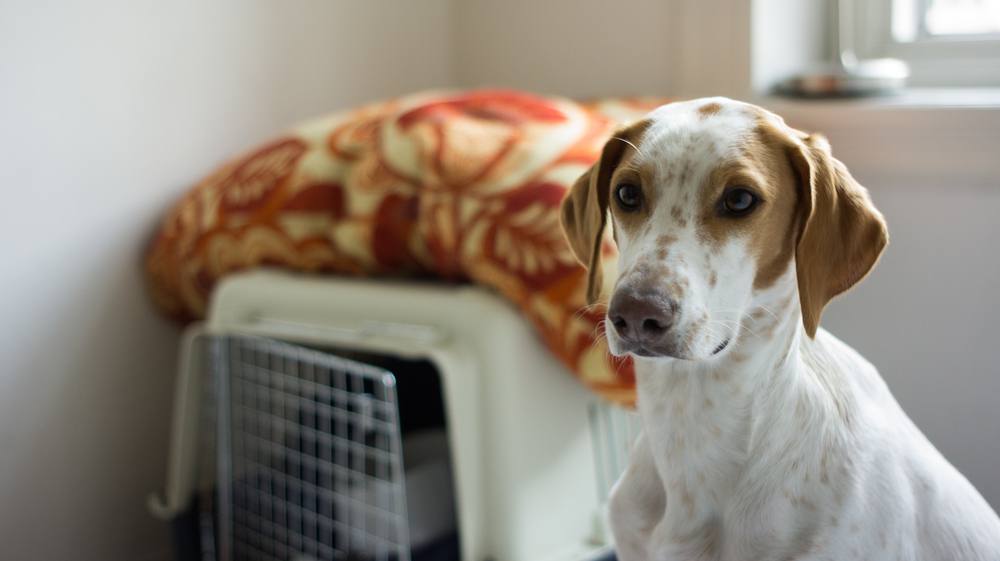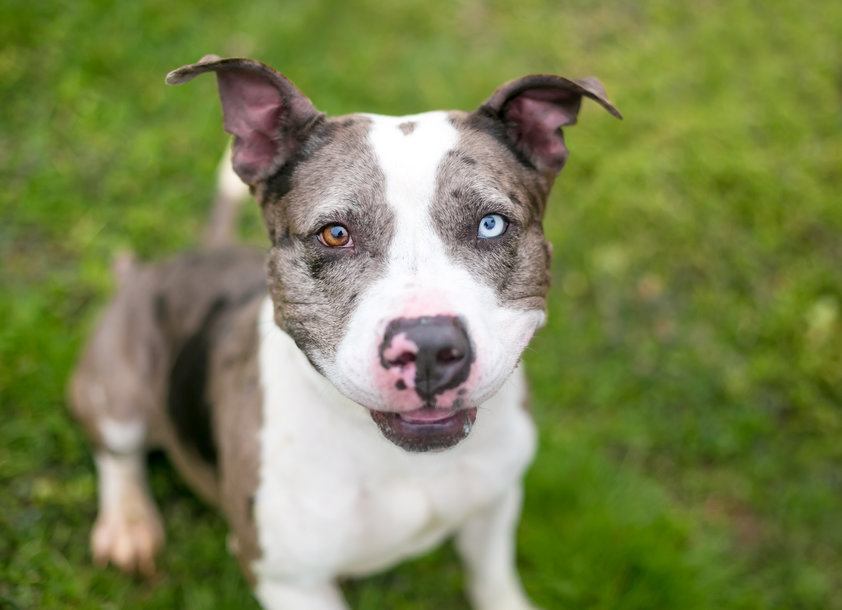How to Soundproof a Dog Crate: 7 Easy Solutions (With Pictures)

Updated on

Soundproofing your dog’s crate can benefit both you and your dog, and it can be accomplished with a variety of methods for different budgets. While you can’t make your dog’s crate entirely soundproof, you can cut down on the amount of noise entering and escaping the crate.
Read on if you’re interested in protecting your ears and helping your dog escape from stress. Here’s how to soundproof a dog crate quickly and easily:
Why Soundproof a Dog Crate?

Many dogs become fearful when they are exposed to loud noises, such as thunder, noisy vehicles, and fireworks. One way to help your dog is to be aware of approaching storms and holidays so you can prepare in advance for your dog’s exposure to these explosive occasions.
Some of the signs of stress you might see in your dog could include:
- Pacing back and forth.
- Growling for no discernible reason.
- Freezing or stiffness.
- Shaking and trying to hide.
- Barking and whining for no reason.
- Body language: showing the whites of their eyes, ears, and tail tucked in, raised hackles, licking of the chops and drooling, excessive yawning and panting.
Any of these potential signs of stress might indicate your dog is feeling a great deal of anxiety. Providing her with a safe place to escape to is one method that can help reduce her stress.
How to Soundproof a Dog Crate: 7 Easy Methods
1. Soundproof Dog Crate Cover

Most crates tend to be wire cages, so finding ways to create a safe space for your dog will be a little more challenging but not impossible. First, you can purchase one of these indoor/outdoor crate covers. Be sure to measure your crate to ensure a good fit. You can pair a crate cover with a crate mat that is machine washable as it adds extra comfort and soundproofing.
Crate covers do not provide complete soundproofing, but they will turn your dog’s crate into a cozy, dark den that might still provide some measure of comfort and security. Particularly, if your dog already views her crate as a safe place.
2. The Soft Crate
Another option could be to invest in a soft dog crate. While they aren’t inherently soundproof, the entire crate is made of a soft and durable material, which will cut down on some of the noise, especially in comparison to the traditional wire crates.
They have the additional advantage of collapsing and folding flat for easy storage and transport. They make excellent travel crates. They create a safe, dark den for your dog, and the mesh windows can be unzipped to allow for ventilation.
3. Acoustic Panels
Another option that isn’t too expensive is to use soundproof or acoustic panels similar to these ones. Many acoustic panels are made of foam and are therefore very light and can be cut to the right size. However, because of their lightness, they might not be durable and therefore, they won’t last forever and might need replacing after some time.
They can be placed on the outside and inside of the crate using durable packing tape or some kind of clip. You will want to cover all sides, including the ceiling and floor of the crate on the inside. Overlapping the panels by about an inch will ensure no cracks and therefore, better soundproofing.
You have the option of taking the panels off and on when necessary or leaving them on permanently. Particularly if your dog barks a lot and disturbs the neighbors, however, if your dog likes to chew things, the acoustic panels might not be the best solution for your crate.
4. Moving Blankets
You can also use moving blankets such as these as an easier alternative to the acoustic panels. Most heavy blankets can do a small amount of dampening, but moving blankets are weighted, padded, and very durable, which allows extra soundproofing.
On the downside, these moving blankets are often not machine washable and can only be spot-cleaned. This shouldn’t be a problem if you don’t place these blankets on the bottom of the crate, for obvious reasons.
The advantage of moving blankets over the foam panels is the ease of use. You will need about 1 to 3 moving blankets depending on the size of your crate, and just drape them over the crate. The acoustic panels are smaller, and you will, therefore, need more plus it won’t be as easy to take them on and off if you don’t want to leave them on permanently.
The disadvantage is that the weighted blankets don’t provide the same amount of soundproofing that you will get from the acoustic foam. Plus, on a hot day, your dog might feel like she’s in a sauna.
5. Soundproof Crate for Dogs

At the time of this writing, there are very few dog crates that are made specifically to be soundproof and are unfortunately costly. The ZenCrate, based out of Florida, claims to not only have soundproof qualities but include vibration dampening, a fan to provide extra ventilation, and music that claims to calm anxious dogs.
Then there’s the Prestige Quiet Kennel, based out of England, with similar features to the ZenCrate with the exception of the music.
We are not here to advise you to purchase any of these products but to show you what alternatives are available to you.
6. Use Things from Around the House

If you can’t afford to buy anything extra, you can always use any spare pillows and blankets you have stored in your household. Draping blankets over and inside the wire crate will not cut out noise completely, but it will dampen some of the excess noise and still provide your dog with a dark, safe environment.
7. Last But Not Least
This last option does not deal with your dog’s crate directly. You can choose a small room or space and soundproof this instead of your dog’s crate. For example, if you have a small area (like the small closets found under the stairs (Harry Potter style) or a small room that you don’t use, or you don’t mind giving up, you can soundproof these areas using acoustic foam.
If the space is quite small, you can line it with blankets on all walls, including the floor and ceiling, which will provide your dog with a soft and snug space.
Be Careful
You need to be aware that soundproofing your dog’s crate essentially means the space might not have enough ventilation and could become uncomfortably hot. Ensure you don’t leave the crate near any heat source (such as radiators, heating vents, or near a window with a lot of sunlight), and be sure that there is proper airflow.
Unfortunately, airflow does mean allowing some sound in, but breathing is pretty important.
Conclusion
Regardless of your budget, there are a variety of ways, expensive and free, and somewhere in the middle, that can help you create a quiet and safe space for your dog. The easiest solution is, unfortunately, the most expensive with the dog crate already soundproofed and a variety of bells and whistles designed to help calm your dog.
The cheaper solutions range from buying a soft crate to crate covers to moving blankets and acoustic foam. Each of these options has its advantages and disadvantages, but all will help with some form of soundproofing your dog’s crate. Soundproofing a room or space might be a more significant task but it will give you a safe place for a large dog as well as a quiet space so your dog’s barking won’t disturb your neighbors.
If your dog is afraid of loud noises, like most are, setting up her dog crate so she’ll have a space to escape to will give her great comfort and make these eventful occasions easier for everyone.
See also:
- 12 Sounds Your Dog Makes & Their Meaning (With Video Examples)
- Why Does My Dog Hide Under the Bed? 6 Common Reasons
Featured Image Credit: sophiecat, Shutterstock

















